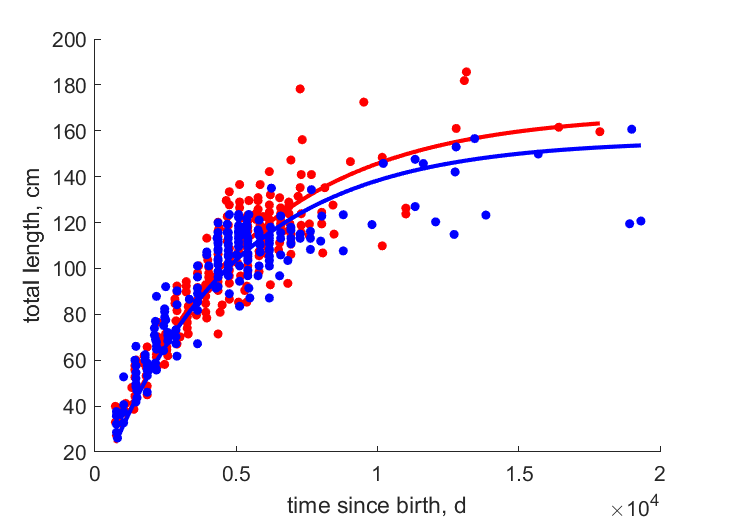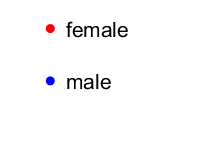Predictions & Data for this entry
| Model: abj | climate: ME | migrate: | phylum: |
| COMPLETE = 2.5 | ecozone: MS | food: biPz, jiCvf | class: |
| MRE = 0.076 | habitat: 0jMp, jiMcd | gender: D | order: |
| SMSE = 0.013 | embryo: Mpe | reprod: O | family: |
Zero-variate data
| Data | Observed | Predicted | (RE) | Unit | Description | Reference |
|---|---|---|---|---|---|---|
| ab | 75 | 73.35 | (0.02204) | d | age at birth | fishbase |
| tp | 2920 | 2339 | (0.199) | d | time since birth at puberty | fishbase |
| am | 1.825e+04 | 1.825e+04 | (0.000236) | d | life span | Wiki |
| Lp | 50 | 66.03 | (0.3206) | cm | total length at puberty | fishbase |
| Li | 215 | 187.9 | (0.1259) | cm | ultimate total length | fishbase |
| Wwb | 0.0477 | 0.04151 | (0.1298) | g | wet weight at birth | fishbase |
| Wwi | 1.57e+05 | 1.774e+05 | (0.1298) | g | ultimate wet weight | Wiki |
| Ri | 1495 | 1477 | (0.01225) | #/d | maximum reproduction rate | fishbase |
Uni- and bivariate data
| Data | Figure | Independent variable | Dependent variable | (RE) | Reference |
|---|---|---|---|---|---|
| tL_f |   | time since birth | total length | (0.09682) | Horn2002 |
| tL_m |   | time since birth | total length | (0.105) | Horn2002 |
Pseudo-data at Tref = 20°C
| Data | Generalised animal | Dissostichus eleginoides | Unit | Description |
|---|---|---|---|---|
| v | 0.02 | 0.02553 | cm/d | energy conductance |
| kap | 0.8 | 0.2674 | - | allocation fraction to soma |
| kap_R | 0.95 | 0.95 | - | reproduction efficiency |
| p_M | 18 | 1421 | J/d.cm^3 | vol-spec som maint |
| k_J | 0.002 | 0.002 | 1/d | maturity maint rate coefficient |
| kap_G | 0.8 | 0.8001 | - | growth efficiency |
Discussion
- Males are assumed to differ from females by {p_Am} only
- temperature is guessed
- mod_1: males have equal state variables at b, compared to females
Facts
- length-weight: Ww in g = 0.00603*(TL in cm)^3.18 (Ref: fishbase)
- At 12-15 cm TL, semi-pelagic juveniles become demersal at 150-400 m depth. Adults migrate to deeper habitats at depths greater than 1,000 m (Ref: fishbase)
Acknowledgment
- The creation of this entry was supported by the Norwegian Science Council (NFR 255295)
Bibliography